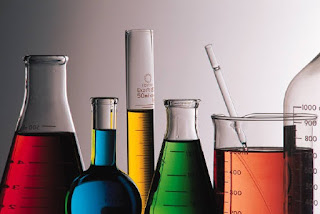Virtual and Remote Laboratories
https://www.ibm.com/developerworks/community/blogs/82288880-044e-425b-8c33-eff85a81d066/entry/10-emerging-technologies?lang=en
Virtual and remote laboratories reflect the current trend
in K-12 education toward more authentic online education, although I believe that adult learners can benefit from this technology too. I think it could also be used in Criminal Justice to do virtual fingerprinting, use Google Earth, and maps to help in investigations. It can be used to research the location of certain plants, look at animal populations, and much more! Though this
technology is four to five years away from mainstream use in schools, but
the benefits of implementation are already clear. Virtual and remote
labs offer flexibility, as students can run experiments as many times as
they like, both in and out of school. This is important as we do most of our learning "outside" of the classroom. This gives students a way to do experiments anywhere. Because these labs are designed
to allow for easy repetition of experiments, students feel less pressure
to execute perfectly the first time. In the controlled environments of
these labs, students are safe, even if they make an error.
Here are some examples given:
Chemistry: Dr. David Yaron, Associate Professor Chemistry at Carnegie Mellon University, developed ChemCollective,
a project of the National Science Digital Library, to create flexible
interactive learning environments in which high school students can
approach chemistry more like practicing scientists. I live in Pittsburgh, PA so this university is near to me.
Marine Biology: In Lysekil, Sweden, high
school students use virtual tools to explore the marine environment of
Gullmar Fjord on the Swedish west coast, learning in the process how
scientific knowledge is created. The students use a virtual ocean
acidification laboratory to conduct studies on the acidification of the
marine environment.
Mathematics: High School students in North
Carolina are using Geometer’s Sketchpad to understand how theorems are
developed. The software is accessed through North Carolina State
University’s virtual computing lab, a cloud-based learning environment
with an interactive online community where teachers share tips on the
software used as well as the projects undertaken.

I think this could be useful for many classes and fields of study from Chemistry to Art History and painting restoration and artifact research.
ReplyDeleteI have never heard of virtual and remote laboratories. That was a very, very interesting read. It seems as though the possibilities are endless. I am going to ask one of the chemistry teachers in my school if he has heard of them.
ReplyDeleteThank you for sharing the link. That was also quite informative. Some of the emerging technologies mentioned I see being used at my school. I use some myself.
Technology has allowed educators to do some amazing things.
Kirt Ways
Hi Kirt,
ReplyDeleteThank you for your input and comments. I appreciate your feedback.
Jennifer
Jennifer,
ReplyDeleteI enjoyed reading this post on virtual and remote laboratories. As a science teacher, this is perfect for me. Most of the supplies we use in science once used, can't be used again. Therefore, the cost of materials for labs can get expensive. The virtual lab could help out with budgeting for labs. I also like the fact that students can do these labs in and out of the classroom. If a student were to be absent, they could easily make it up, which is not as easy when it is an actual lab at school. Thanks for sharing this technology.
- Joe Boeckman
Hi Joe,
ReplyDeleteThank you for your feedback and comments. I really appreciate it very much! I am glad you found this article useful.
Jennifer